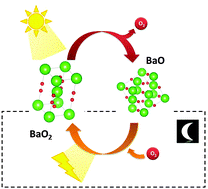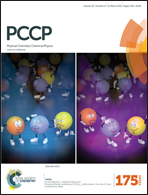Revisiting the BaO2/BaO redox cycle for solar thermochemical energy storage†
Abstract
The barium peroxide-based redox cycle was proposed in the late 1970s as a thermochemical energy storage system. Since then, very little attention has been paid to such redox couples. In this paper, we have revisited the use of reduction–oxidation reactions of the BaO2/BaO system for thermochemical heat storage at high temperatures. Using thermogravimetric analysis, reduction and oxidation reactions were studied in order to find the main limitations associated with each process. Furthermore, the system was evaluated through several charge–discharge stages in order to analyse its possible degradation after repeated cycling. Through differential scanning calorimetry the heat stored and released were also determined. Oxidation reaction, which was found to be slower than reduction, was studied in more detail using isothermal tests. It was observed that the rate-controlling step of BaO oxidation follows zero-order kinetics, although at high temperatures a deviation from Arrhenius behaviour was observed probably due to hindrances to anionic oxygen diffusion caused by the formation of an external layer of BaO2. This redox couple was able to withstand several redox cycles without deactivation, showing reaction conversions close to 100% provided that impurities are previously eliminated through thermal pre-treatment, demonstrating the feasibility of this system for solar thermochemical heat storage.


 Please wait while we load your content...
Please wait while we load your content...